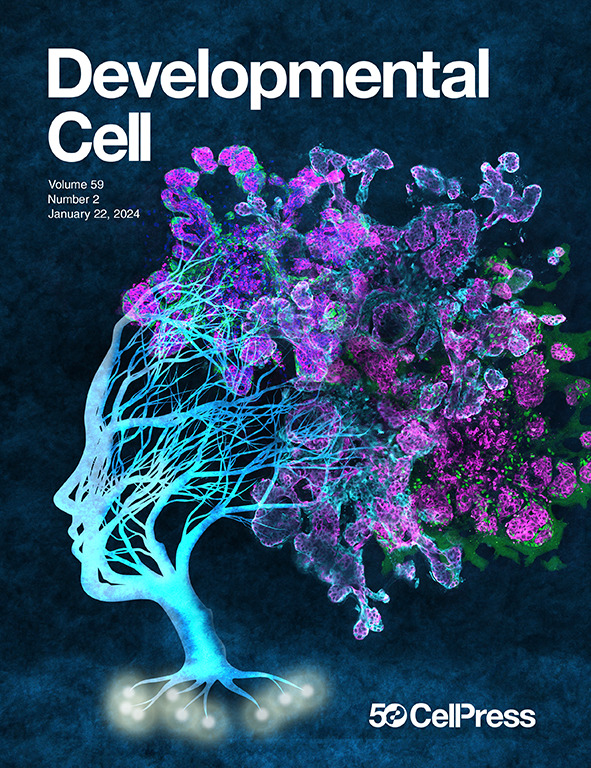基于蛋白质组学的多组学确定了涡虫再生中转录-翻译-蛋白质动力学的路线图
IF 8.7
1区 生物学
Q1 CELL BIOLOGY
引用次数: 0
摘要
确定组织再生的调节因子是再生生物学的基础。虽然转录动力学控制着涡虫的再生启动,但蛋白质机制如何控制再生仍不清楚,因为转录水平通常不能预测蛋白质丰度。为了解决这一空白,我们对地中海施米德涡虫进行了基于质谱的蛋白质组学分析,建立了一个覆盖约10,000个蛋白质的光谱文库,并采用定量方法测量再生过程中的蛋白质组动力学。我们的研究发现了上调的核糖体蛋白,这得到了核糖体分析测序(Ribo-seq)的支持。结合RNA测序(RNA-seq)和核糖核酸-seq分析,将增加的蛋白质丰度分类为转录、翻译和蛋白质稳定性水平的调节模式。功能检查鉴定出25种对涡虫再生至关重要的蛋白质。肌钙蛋白T被确定为再生起始的调节因子,在转录和翻译水平上调之前,显示出蛋白质丰度的增加,表明蛋白质稳定性的调节。总之,我们的研究证明了以前未被探索的核糖体介导和转录无关的蛋白质机制对涡虫再生起始至关重要。本文章由计算机程序翻译,如有差异,请以英文原文为准。

Proteomics-based multi-omics identifies the roadmap of transcription-translation-protein dynamics in planarian regeneration
Identifying regulators for tissue regeneration is fundamental for regenerative biology. While transcription dynamics control planarian regeneration initiation, how protein machinery controls regeneration remains unclear, as transcript levels often fail to predict protein abundance. To address this gap, we performed mass-spectrometry-based proteomic analyses of the planarian Schmidtea mediterranea, establishing a spectral library covering ∼10,000 proteins, and employed quantitative approaches to measure proteome dynamics during regeneration. Our study identified upregulated ribosomal proteins, which were supported by ribosome profiling sequencing (Ribo-seq). Combining RNA sequencing (RNA-seq) and Ribo-seq analyses categorized the increased protein abundance into regulatory modes at transcriptional, translational, and protein stability levels. Functional examination identified 25 proteins essential for planarian regeneration. Troponin T was identified as a regulator of regeneration initiation, showing increased protein abundance before upregulation at transcriptional and translational levels, suggesting a regulation of protein stability. In summary, our study demonstrates previously unexplored ribosome-mediated and transcription-independent protein machinery essential for planarian regeneration initiation.
求助全文
通过发布文献求助,成功后即可免费获取论文全文。
去求助
来源期刊

Developmental cell
生物-发育生物学
CiteScore
18.90
自引率
1.70%
发文量
203
审稿时长
3-6 weeks
期刊介绍:
Developmental Cell, established in 2001, is a comprehensive journal that explores a wide range of topics in cell and developmental biology. Our publication encompasses work across various disciplines within biology, with a particular emphasis on investigating the intersections between cell biology, developmental biology, and other related fields. Our primary objective is to present research conducted through a cell biological perspective, addressing the essential mechanisms governing cell function, cellular interactions, and responses to the environment. Moreover, we focus on understanding the collective behavior of cells, culminating in the formation of tissues, organs, and whole organisms, while also investigating the consequences of any malfunctions in these intricate processes.
 求助内容:
求助内容: 应助结果提醒方式:
应助结果提醒方式:


